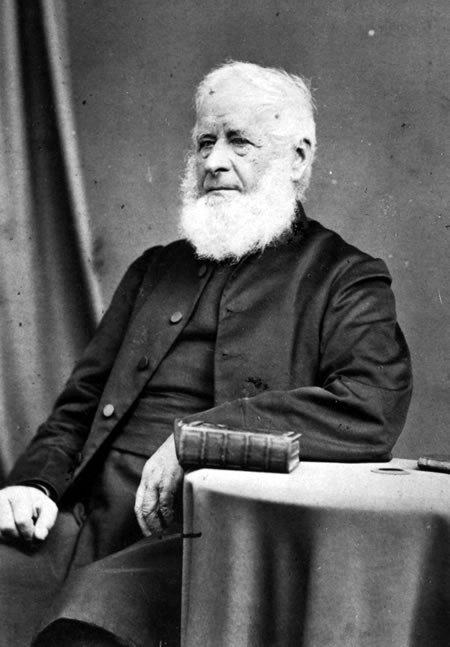
The missionary and linguist, Bishop William Williams (1800–1878), photographed late in his life.
William Williams arrived in the Bay of Islands as a missionary in 1826 and moved to the east coast of the North Island in 1839. Twenty years later he was installed as bishop of the predominantly Māori diocese of Waiapu.
While he criticised the Waitara purchase which sparked the first Taranaki War, Williams conceded the wisdom of the government subjugating ‘rebel’ Māori. However by the time of the fighting with Te Kooti in his own diocese and Tītokowaru on the west coast his views had changed. ‘All this war down to the present time [1868] has sprung out of Waitara…. As a community and as a government we have been puffed up, first with an idea that we were in the right, & secondly that we were able to put down the natives by our own strength…. We are now brought very low.’ He had also come to believe that land confiscation was unjust.
See also: biography of William Williams (DNZB)

Community contributions